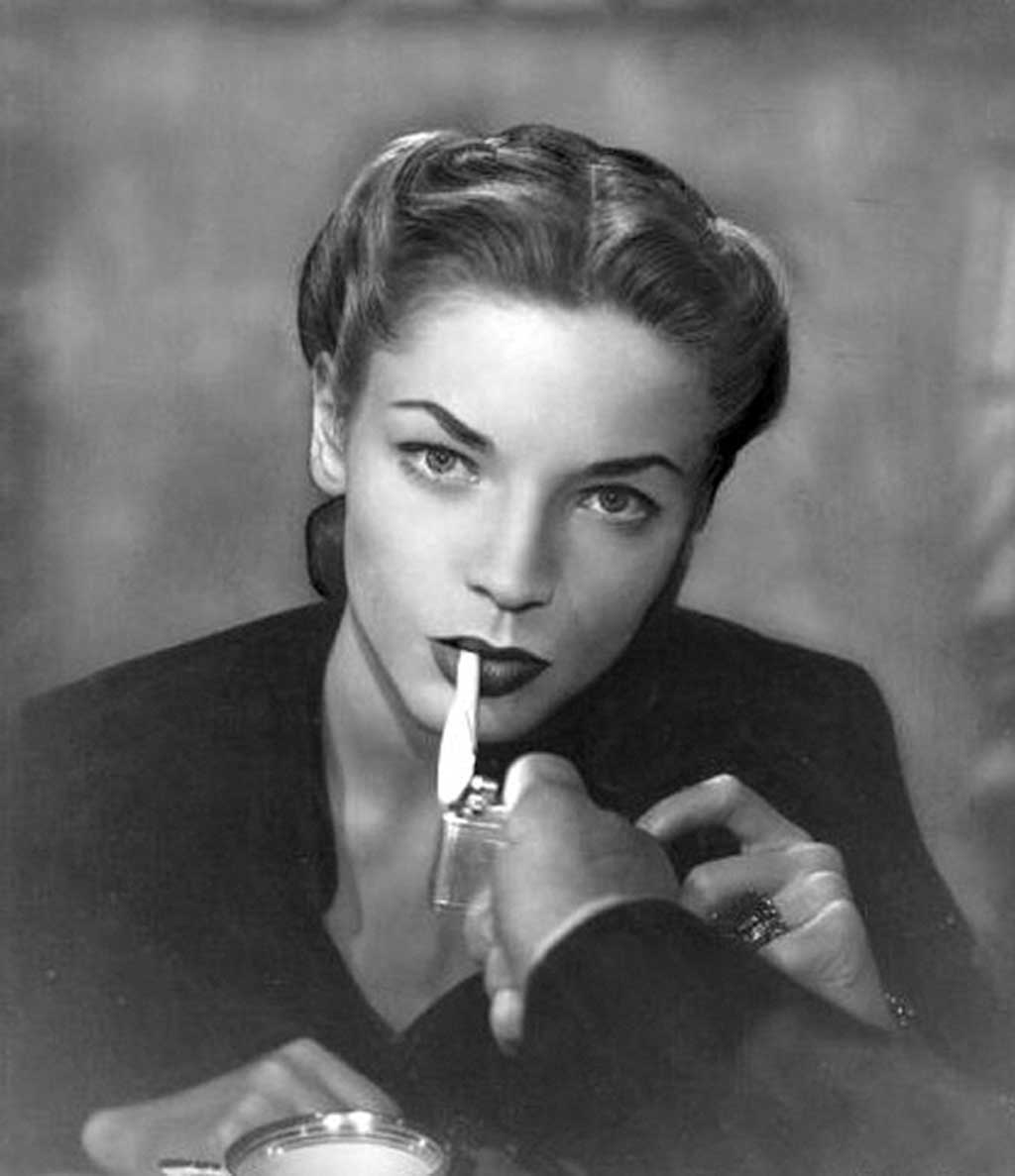by David Cohea, ReMIND Magazine
“She liked me. I could feel that. The way you feel when the cards are falling right for you, with a nice little pile of blue and yellow chips in the middle of the table. Only what I didn’t know then was that I wasn’t playing her. She was playing me, with a deck of marked cards, and the stakes weren’t any blue and yellow chips. They were dynamite.” Walter Neff (Fred MacMurray) describes Phyllis Dietrichson (Barbara Stanwyck) in Double Indemnity (1944). When a femme fatale makes her entrance in a noir film, there’s no mistaking her, because trouble brews around her like an aura. When she first appears at the threshold of an opened door, our first look at her is like a diamond held up to the light — white-hot and freezing at the same time. There’s lots of hair and leg and eye contact. Her dress is diaphanous and with enough curve to make even a tough guy sweat bullets. Angel with heartbreaker eyes, devil with a blue dress on: Fate, say hello.
Where did she come from? There were moll dames in gangster movies of the ’30s, but those were cutouts compared to these complicated, fully fleshed women, flush with sexuality and ambition while still managing (most times) to pack a decent heart. Maybe World War II shook things up. Maybe not every Rosie the Riveter got married and headed for the ‘burbs after the war and instead became her own hero — tough, cool, independent, concealing her vulnerability in sateen and black leather.
To find her, we have to stray deep into the heart of the city, at night, into the dangerous zones of vice and violence — our underworld psyche, ungovernable and free. There, too, we find the antiheroes who were just her cup of tea, gangsters and card sharks, playboys and private dicks revolving around affections like the loaded chambers of a gun. All were desperate to break out, score the big one, and breech the razor-wire wall of lousy deals over to good times.
These gals are willing to use darker wiles than the charming smile of compliant femininity to grab that ring on the merry-go-round. They will lie and cheat and even murder to win that ring with its gold glint of freedom. Freedom means getting sprung from the jail of a bad relationship; it means no longer being someone’s property; it means breaking out of the cycle of endless city nights that never end well. That freedom was worth risking everything to get even a passing hope of it … risking even one’s own life.
Many of these women didn’t survive the last reel, but they left an indelible impression on the American psyche. A sense of reckless empowerment that would, by the ’60s and into the decades beyond, declare a certain independence and give a woman real clout.
Who hasn’t met these gals, somewhere on the dark end of the street, bad girls with hearts of fool’s gold? And who doesn’t still secretly revere those immaculate and bold creations as we live out existence on the other, duller, brighter side of the tracks?
Brought to you by the publishers of ReMIND magazine, a monthly magazine filled with over 95 puzzles, retro features, trivia and comics. Get ReMIND magazine at 70% off the cover price, call 844-317-3087 or visit remindmagazine.com
Lauren Bacall lights up the screen in “Dark Passage” (1947)
Veronica Lake and Alan Ladd in “This Gun for Hire” (1942)

